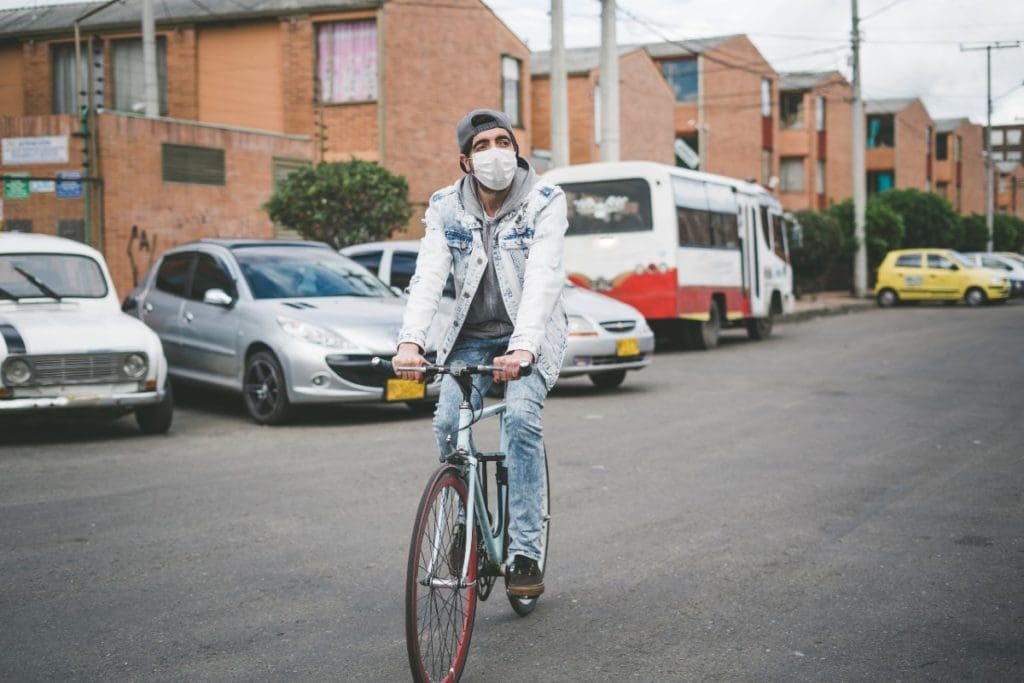Letter from America: January 2021

What a year! And that’s an understatement. But with 2020 inching toward it close it’s time to attempt a forward look for 2021. It’s sort of a tradition among the press — this sometime feeble annual attempt to prognosticate about the future. In this case more specifically about the future of cycling in the U.S. So let me toss out some thoughts. Still, I readily admit that prognosticating can be crap shoot. Still, it’s a worthwhile exercise and it will be interesting to see how 2021 ends a year from now.
Despite all the craziness among the right-wing disinformation machine, Joe Biden will take office Jan. 20. And what Donald Trump does after that will be of no importance for bicycle sales, bicycle infrastructure, retail, or anything else cycling related. So all eyes are on Biden.
- First, a word about COVID and vaccines and a return to normalcy. There has been much happy talk of a vaccine, mostly after a grim recitation of deaths, hospitalizations and the many millions of Americans who’ve been infected. Think, ‘Right around the corner!’ or that oft cited cliché made famous during our foray into Vietnam that, ‘There’s light at the end of the tunnel!’ All of which is true except we’ve yet to see the corner or the light. Yes, the vaccine is coming, but the betting is it would be June, barring any major hiccups in the distribution and vaccination protocol, before the number of Americans vaccinated start to reach substantial numbers. Even then, epidemiologists warn that masks should be worn, distance should be considered, and a cautious approach to bars and dining should be the norm. And for those of you in Australia following our near suicidal approach to masks etc. as being a violation of our god given rights to freedom, I suspect that COVID will be an issue damping the economy for some time. And then let’s not forget the anti-vaxxers and skeptics.

- Economists, commentators and industry officials note that the industry shouldn’t expect a radical change in Chinese trade policy. At least in the short term. More to the point, a 25 percent tariff on kids’ bikes and e-bikes, along with a few other categories, will be re-instated effective Jan. 1. Those categories had been granted a temporary tariff exclusion in August. No one predicts that a Biden Administration will abruptly change that. E-bikes, in particular, are already expensive at the IBD level and the addition of a 25 percent tariff, which consumers ultimately pay, will remain in place. Ouch!
- Among suppliers at the moment, there appears to be marked enthusiasm for the future of e-bike sales. And certainly Taiwanese manufacturers have gone all in on the category. Nonetheless, caution is called for and much depends on how the economy unfolds over the next six months. Overall confidence in the economy is waning as COVID continues to ravage the personal lives of many millions. Americans are saving money at a higher rate than economists have seen in decades. For a consumption-led economy, that’s not necessarily a good sign. And splurging on e-bikes by locked-in consumers could easily taper off as the year unfolds. It could be a risky bet to calculate that what the industry experienced last April, May and June will continue into a new year’s cycling season.
- Within e-bikes, the question is what sub-category will enjoy the most growth if not in units but in dollars. My bet is on e-MTBs and it appears that is where the U.S. industry continues to focus its marketing. I also suspect there will be more interest in cargo bikes by delivery companies. There is, of course, hope that urban consumers who at one time relied on mass transit to get to work may look to e-bikes as a commuting solution. But I have my doubts. Few consumers, even riding e-bikes, want to commute more than a few miles to work and then where do you stash those 50+ pound (20+ kilogram) bikes anyway? I’m betting consumers will slowly return to old habits—either driving to work or cautiously returning to mass transit particularly as vaccination numbers take hold. The big winners, I think, will be better designed and safer e-scooters as well as regular bicycles offered for hire at key kiosks. It’s really the last mile solution. Still, overall, I think commuting will see a small but lasting uptick over time as a result of COVID.
- I’ve been much amused at the near frenetic pace in valuations for companies like Peloton, Zwift, Soul Cycle etc. all of which faltered after announcements that vaccines were right around the corner. Still, cycling in the safe confines of a living room has its appeal. At least for now. But the machines tend to be expensive, wait lists are long, and maintaining and growing subscriptions and memberships is no easy task. There’s a point of diminishing returns where it becomes increasingly more expensive to replace subscribers who choose to leave and add enough new subscribers to maintain a sufficient rate of growth for investors. I suspect—and it depends upon vaccinations, the ongoing state of COVID, and the desire to be with like-minded people doing things outside—that the growth in subscriber-based web-based riding will soften. Sell that stock soon?
- A final thought. So much business—especially for accessories and apparel—has moved online direct-to-consumers. More than one executive in the world of online management have said, more or less, that the transformation of sales from walk-in retail to online purchasing has shifted more rapidly than anyone ever anticipated due to COVID. Many consumers are happy with the shift. This change in sales structure is affecting all retailers including IBDs. We also have seen a long-term decline in accessory SKUs carried by dealers, more cherry picking, and mandates from some suppliers (Trek, Specialized and others) as to what and how many branded SKUs dealers must purchase to carry their bicycle lines. If this shift to online sales continues, bicycle stores could look radically different in the future as they focus on bikes and service with fewer accessories hanging from slat walls. This could be especially true for apparel.
